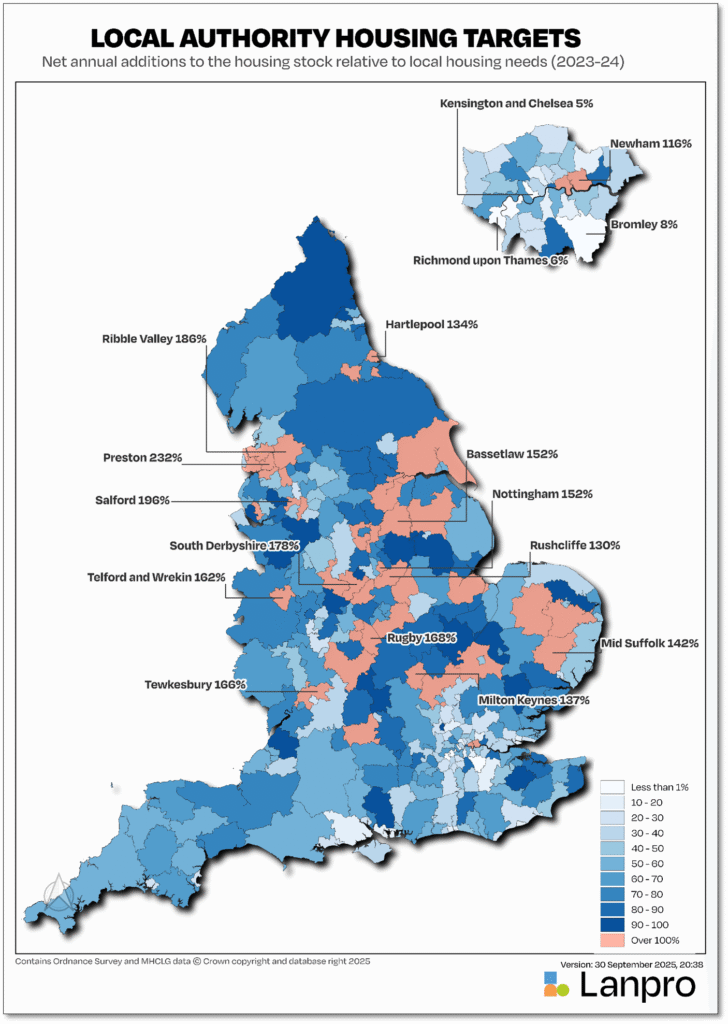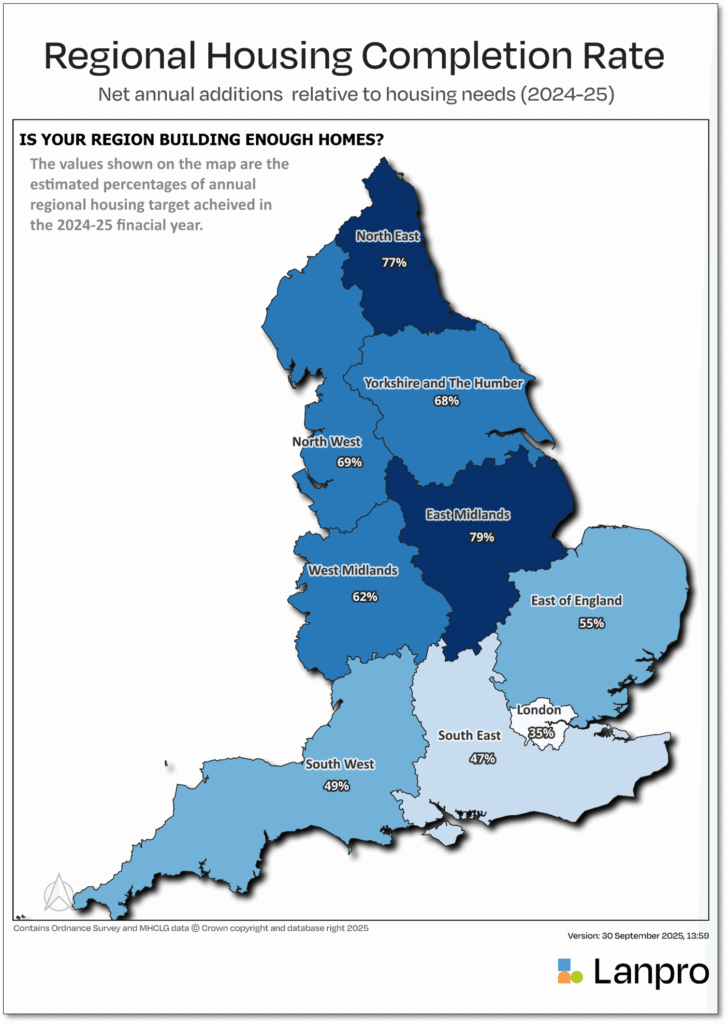If there was ever a time to ‘build, baby, build’ its now – research shows Labour is on track to deliver just half of the homes they promised before the next general election.
The analysis, which was conducted by Lanpro and based on official figures from the Ministry for Housing, Communities and Local Government (MHCLG), shows in 2024-25 around 196,500 homes were added to England’s housing stock, which equals a monthly average of 16,375. These statistics are 10% below the long-term average and well below the 300,000 annual figure widely accepted as the minimum to reach Labour’s target.
In similar vein, experts revealed that if these trends continue the UK will be around 860,000 homes short by the end of 2029, falling 46% below Labour’s goal.
While the government have tried to implement new plans to boost housebuilding, such as mandatory housing targets, the creation of a National Housing Bank and releasing areas of the green belt for new developments, it’s clear more support is needed as planning delays and economic uncertainty were cited as reasons for hindering progress.
According to the research, the shortfall of homes across the UK is not evenly spread. Maps created by Lanpro show London and the South East met just 35% and 47% of their respective targets in 2024-25, while the East Midlands and North East achieved closer to 80%.

Meanwhile, the disparity was found to be even starker at a local level. Preston exceeded their housebuilding targets by 232%, and Ribble Valley and Salford also went above and beyond. However, Kensington and Chelsea delivered just 5% of required homes, and Bromley just 8%.

‘During the Labour Party Conference, we heard the mantra ‘build baby build’ numerous times. Yet our analysis shows that to pick up the necessary speed to meet the target, record-breaking numbers of homes will need to be built in a short space of time,’ Faraz Baber, chief operating officer at Lanpro, said. ‘Based on the current housing delivery trajectory, if we do not see a significant uptick with immediate effect, we could see the target missed by almost half.’
He continued: ‘This will require a holistic, cross-departmental collaborative approach, led by both No.10 and the Treasury, working with local authorities and government agencies. It will require a significant number of these homes to be built directly by the government and its associated agencies, and will require alignment with transport and energy planning.
‘Failing this, it’s not clear how the target will be met.’
Photos by Troy Mortier via UnSplash and Lanpro.
In related news:
Cheaper, better, faster: government plans to streamline house-buying

















Leave a Reply